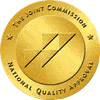I love to watch the colors change in October, when pink is in full display during Breast Cancer Awareness month. With each hot-pink scarf, T-shirt and pair of football cleats I see, I’m reminded of the vital role radiologists have played – and continue to play – in combatting this disease.
The American Cancer Society reports early detection and treatment has resulted in an estimated 348,800 fewer breast cancer deaths between 1990 and 2016 than would have been expected if the death rate had remained at its 1989 peak of 33.2 per 100,000. Consistent declines dropped the rate to 20.0 per 100,000 by 2016.
However, the decades-long decline in the breast cancer death rate has begun to slow in recent years, while incidence rates are inching up. We must continue to make breast imaging a priority.
It begins with you
65% of women over 40 had a mammogram within the last year. That’s good news, but not perfect news. Early detection decreases breast cancer mortality by up to 40%. But early detection will not reach its full life-saving potential until every woman embraces annual screenings.
All women should be evaluated for breast cancer risk no later than age 30, so that those at higher risk can be identified and can benefit from supplemental screening. However, 75% of women diagnosed with breast cancer have no special identifiable risk factors; screening only women with risk factors will miss the vast majority of women who will develop breast cancer.
The American Cancer Society, the American Society of Breast Disease, the American College of Radiology and the Society of Breast Imaging agree that starting annual mammography at age 40 saves the most lives.
If, dear reader, you have breasts and have not been screened within the last year, stop reading and contact your physician to discuss your risk and schedule a screening. Now. Please.
For all readers, please share these guidelines with women you care about. You will be helping ensure they remain in your life for years to come.
Keeping abreast
Mammograms are ordered or provided in over 17 million physician office visits each year (Source: 2016 National Ambulatory Medical Care Survey). These studies are critical to identifying an estimated 268,600 new female – and 2,670 male – breast cancer cases annually. If the guidelines above are followed, these numbers will increase substantially.
Whether an imaging generalist or a breast specialist, it’s important for radiologists to stay current on breast screening techniques and technologies. Patients benefit when we make breast imaging an ongoing component of our CME plans.
MEDNAX Radiology Education offers a number of free, accredited online CME courses on a wide range of specialties. You can access pre-recorded sessions whenever fits your schedule, including these three on breast imaging:
Breast Imaging Update: Well Circumscribed Lesions of the Breast. Presented by your humble author, this course will help you understand how to use imaging tools to detect and diagnose well circumscribed lesions.
Breast MRI: Clinical Uses and Case Studies. Also presented by me, you’ll gain understanding of clinical uses of breast MRI, and identify and interpret common findings.
Hot Topics in Breast Imaging. Featuring Kate Lampen-Sachar, MD, this course reviews: newer methods for localization; abbreviated protocol MRI; benefits of contrast enhanced mammography; and algorithms for screening of high-risk patients.
I’m proud to be among the army of radiologists, physicians and technicians making consistent advances in the battle against breast cancer. We are winning. With continued diligence, we can further diminish the threat of this disease.





